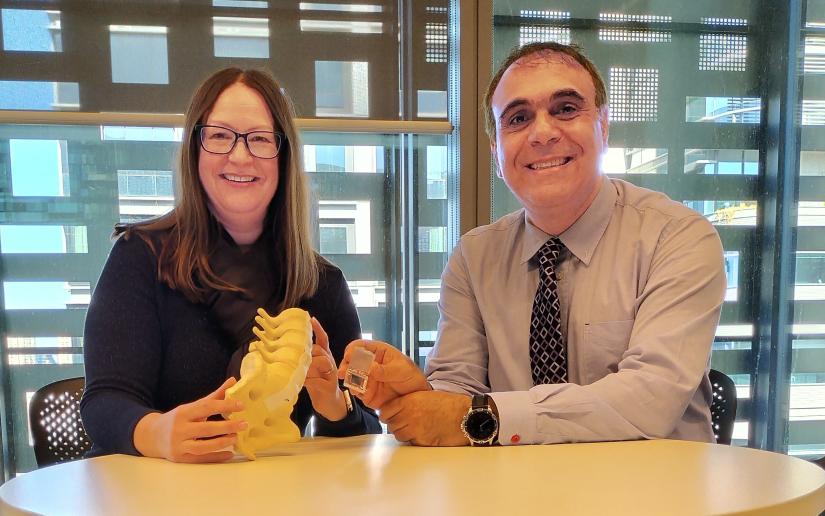UTS biomedical engineers have unveiled what they call an intervertebral disc-on-a-chip, a world-first "precision engineered toolbox" for research into lower back pain, the leading cause of disability worldwide.

An image of cells on a disc-on-a-chip modelling a healthy intervertebral disc, researcher provided
It’s the leading cause of disability worldwide and the third most expensive health condition across the globe yet there still is no treatment for lower back pain that goes beyond relieving its symptoms, with all of the downsides of pain medication and surgical interventions that entails.
One of the main causes of lower back pain is degeneration of the intervertebral disc – the cushion of cartilage between the vertebrae – that is a common consequence of ageing, structural defects and injury.
There’s been no real progress in efforts to reverse intervertebral disc degeneration or to engineer replacement tissue, but now biomedical engineers at the University of Technology Sydney (UTS) have unveiled what they call an intervertebral disc-on-a-chip, a “precision engineered toolbox for low back pain studies”.
“In a situation where no solution to root causes has been forthcoming and 60 per cent of surgery for back issues has to be revised, researchers have long needed a platform to accurately simulate both healthy and diseased intervertebral discs,” said Chancellor's Research Fellow Dr Javad Tavakoli.
“We are the first in the world to develop a physiologically and clinically relevant in vitro model to provide an accurate, controlled environment for lower back pain research,” said Dr Tavakoli, who with UTS Professor of Biomedical Engineering Joanne Tipper has developed the disc-on-a-chip, in collaboration with clinicians and cell specialists.
“The composition and structure of the human intervertebral disc is remarkably complex,” Professor Tipper said. “At its core is a gel-like nucleus surrounded by concentric layers of collagen fibres forming three regions that together support both the spine’s flexibility and its load-bearing strength.

Professor Joanne Tipper and Dr Javad Tavakoli
“This complexity has been a barrier to developing an in vitro intervertebral disc model that can replicate the complex mechanobiology of native tissue and effectively evaluate experimental methods for treatment or regeneration.
“By the same token the use of animal models has not been able to provide physiologically and clinically relevant results owing to the different size, mechanics and biology of the human intervertebral disc.”
The disc-on-a-chip is a high-resolution 3D-printed microfluidic device with three channels allowing the accurate simulation of the different regions within a natural disc and even the personalisation of the model to an individual.
“The disc-on-a-chip can be used to replicate the degeneration of a healthy disc or alternatively be set up as a degenerated disc to test the efficacy of new pharmaceuticals or cell therapy,” Dr Tavakoli said.
“Our chip enables performing cost-and time-effective lab experiments with the potential to enhance the physiological relevance of experimental data leading to successful clinical outcomes. It also offers the opportunity to reduce the need for animal use in the lab.”
The discovery has already attracted attention, winning two internationally prestigious awards: the AO Spine 2022 Discovery and Innovation Award and the 2022 David Findlay Early Career Research Award of the Australian and New Zealand Orthopaedic Research Society.
The development of the Intervertebral disc-on-a-chip is covered in more detail in a recent paper in the journal Trends in Biotechnology: “Intervertebral disc-on-a-chip: a precision engineered toolbox for low back pain studies”.

